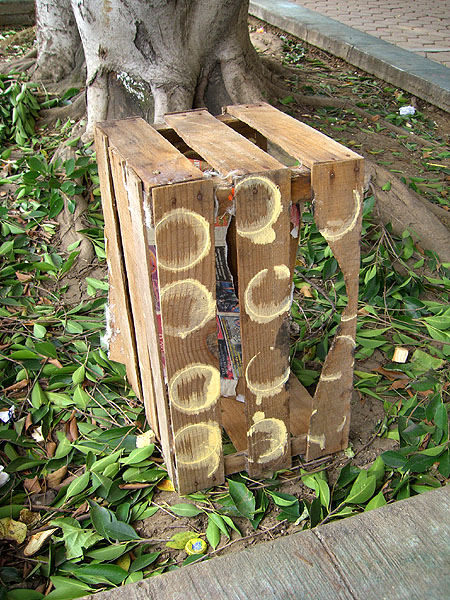 citysong – foto by smith Wanna hear “feeeeeeed meeeeee” multiplied by eight billion hungry angry voices like an outtake from some George Romero zombie flick? Well, it looks like we might be heading that way. In 1940, one calorie of fossil-fuel energy produced 2.3 calories of food energy to eat. In 2008, it takes 10 calories of fossil-fuel energy to produce one calorie of modern supermarket food. “The way we feed ourselves contributes more greenhouse gases to the atmosphere than anything else we do — as much as 37 percent, according to one study.” “Chemical fertilizers (made from natural gas), pesticides (made from petroleum), farm machinery, modern food processing and packaging and transportation” have made it so “when we eat from the industrial-food system, we are eating oil and spewing greenhouse gases.” [ quotes from Farmer In Chief by Michael Pollan, The New York Times Oct 9, 2008 http://www.nytimes.com/2008/10/12/magazine/12policy-t.html ] This is a cogent, coherent article which offers hope, because after clearly laying out why we cannot continue growing cheap food due to lack of cheap oil, it explains how we can fix the problem and make our health and lives better in the process. More Michael Pollan: “Spending on health care has risen from 5 percent of national income in 1960 to 16 percent today. “Four of the top 10 killers in America today are chronic diseases linked to diet: heart disease, stroke, Type 2 diabetes and cancer. “In the past several months more than 30 nations have experienced food riots, and so far one government has fallen. “The current food system — characterized by monocultures of corn and soy in the field and cheap calories of fat, sugar and feedlot meat on the table — is not simply the product of the free market. Rather, it is the product of a specific set of government policies that sponsored a shift from solar (and human) energy on the farm to fossil-fuel energy. “The U.S.D.A. estimates that Americans throw out 14 percent of the food they buy; much more is wasted by retailers, wholesalers and institutions. “Meat and milk production represent the food industry’s greatest burden on the environment; a recent U.N. study estimated that the world’s livestock alone account for 18 percent of all greenhouse gases, more than all forms of transportation combined. (According to one study, a pound of feedlot beef also takes 5,000 gallons of water to produce . . . a bushel of grain takes a half gallon of oil to produce.) “40 percent of the world’s grain output today is fed to animals; 11 percent of the world’s corn and soybean crop is fed to cars and trucks. “The Centers for Disease Control estimates that one in three American children born in 2000 will develop Type 2 diabetes. The public needs to know and see precisely what that sentence means: blindness; amputation; early death. All of which can be avoided by a change in diet and lifestyle. “When a single factory is grinding 20 million hamburger patties in a week or washing 25 million servings of salad, a single terrorist armed with a canister of toxins can, at a stroke, poison millions. Such a system is equally susceptible to accidental contamination: the bigger and more global the trade in food, the more vulnerable the system is to catastrophe.” Welcome to the future flux. May you live in interesting times. PS – It takes 2.5 liters of water to make and bottle one liter of Coke, and 250 liters of water to grow the sugar cane used in the mix. Two hundred fifty-two and a half liters of water used to get one liter of Coca-Cola. That’s priceless.  feedme – foto by smith |